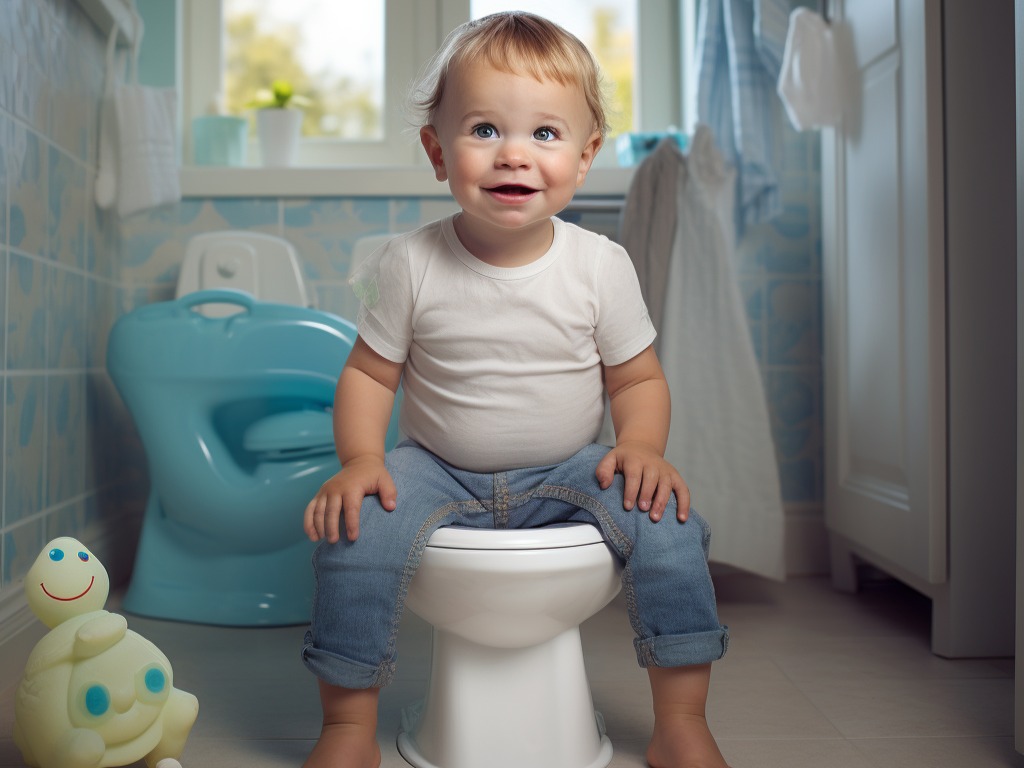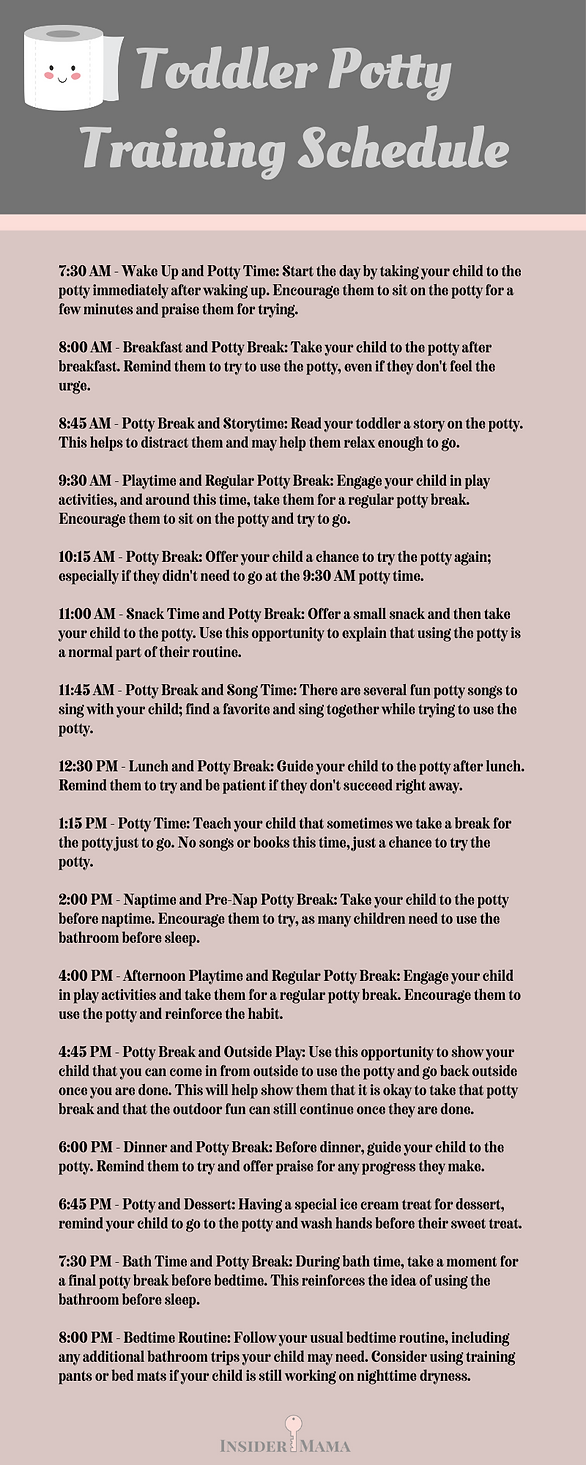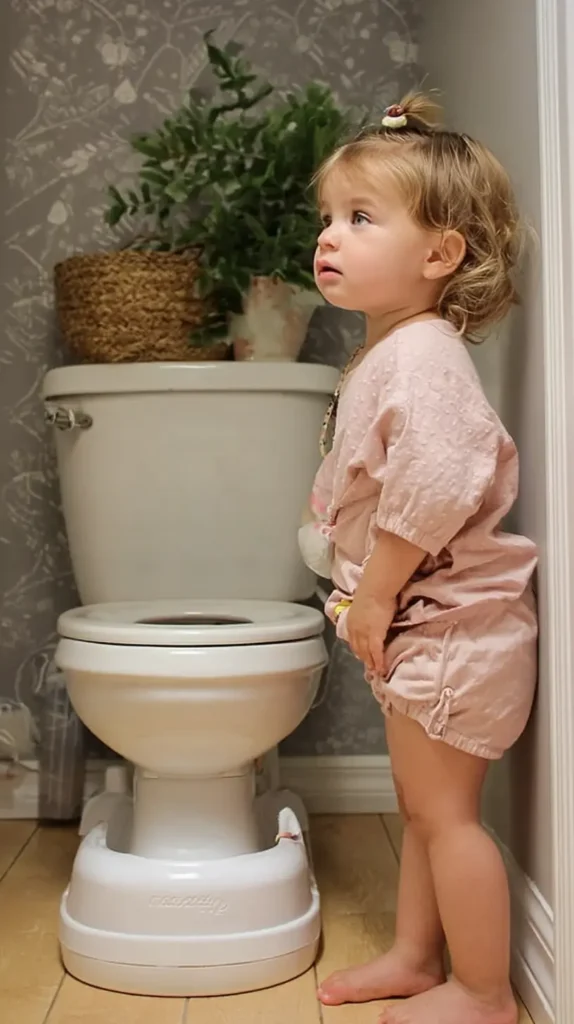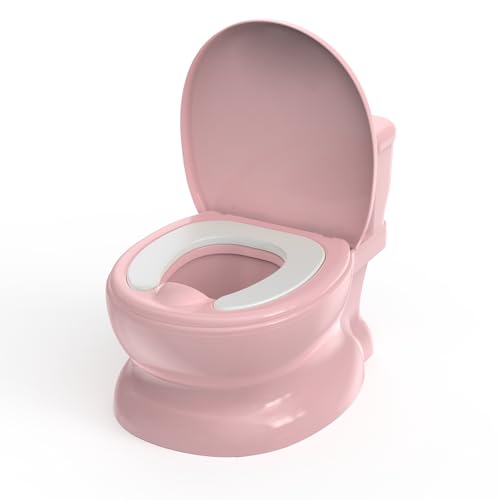Potty training is one of those parenting moments that sneaks up fast, so having a simple potty training schedule makes everything feel lighter. I like knowing there’s a plan that keeps the day steady, especially when the whole process can feel a little unpredictable. Parenting already comes with enough surprises, so a clear rhythm helps calm things down.
I’ve found that toddlers respond well when they know what comes next. They seem more relaxed when the day flows in a predictable order. A schedule gives them that comfort, and it also gives you a little breathing room. Even small bits of structure can turn a chaotic day into one that feels more manageable.
Some stages feel bigger when you live them in real time, and potty training is definitely one of them. Every tiny win feels like a big step forward. Yet the setbacks feel just as loud. That’s why I like a gentle plan that guides the day without making things feel strict or stressful.
Living in Orlando has taught me to appreciate simple routines, especially since our sunny days usually mean a lot of movement and very little downtime. A steady plan helps me feel grounded even when life moves at a fast pace. Potty training works the same way. A little predictability makes the whole experience smoother for everyone.
This stage doesn’t need to feel overwhelming. You can walk into it with confidence, patience, and a clear schedule that keeps the day moving in the right direction.

Some of the links on this page are affiliate links, which means that if you click on them and buy something, I might get a small commission. But don’t worry; it never costs you more. You can peek at my full disclosure if you’re curious about the fine print.
The Readiness Checklist
Before we embark on the potty-training journey, it’s essential to determine if your child is truly ready. Every child is different, and readiness signs may vary, but here are some common indicators:
- Physical readiness: Look for signs that your child can control their bladder and bowel movements, such as staying dry for longer periods or showing discomfort when their diaper is soiled.
- Cognitive readiness: Your child should be able to understand and follow simple instructions. They should also exhibit an interest in the bathroom habits of others.
- Motor skills readiness: Potty training requires basic motor skills like pulling down pants, sitting on the potty, and wiping. Make sure that these skills have been learned by your child.

Preparing for the Potty Training Journey
Once you and your child are both ready, you can begin the potty-training process! Here’s what you need to do:
- Choose the right equipment: Invest in a child-sized potty chair or a potty seat that fits securely on your toilet. Let your child participate in selecting their special potty to build excitement.
- Stock up on supplies: Gather all the essentials, including training pants, wipes, hand soap, and perhaps a reward system like stickers or small treats to motivate your child.
- Create a potty-friendly environment: Make the bathroom an inviting place for your child by decorating it with colorful artwork, installing a step stool for easy access, and keeping their favorite books nearby.
Introducing the Concept of Going on the Potty
Congratulations! You’ve reached a pivotal moment in your parenting journey – the time has come to embark on the exciting adventure of potty training with your little one. Here are a few ideas to get you started:
- Storytime: Read age-appropriate books about potty training together. These stories often introduce the topic in a fun and relatable way, helping your child understand the process.
- Role-playing: Use dolls or stuffed animals to demonstrate how to use the potty. This interactive play can ease any anxieties your child may have and make the concept feel more familiar.
- Let them observe: Allow your child to observe you or an older sibling using the toilet whenever possible. This helps them understand that using the potty is normal in everyday life.
The Potty-Training Schedule: Establishing Consistency and Routine
One of the key factors in successful potty training is establishing a consistent schedule. A well-planned and structured routine will help your child understand expectations, recognize their body’s signals, and build a habit around using the potty.
Set Regular Potty Breaks
To start, it’s essential to set regular potty breaks throughout the day. Begin by taking your child to the potty every 30-60 minutes, even if they don’t feel the urge to go. This consistent routine helps them become familiar with the process and reinforces the habit of using the potty. As your child becomes more comfortable, you can gradually increase the time between potty breaks.
Timing is Key
Pay attention to your child’s natural bodily rhythms. Most children are more likely to need to use the bathroom after meals, upon waking up, or before bedtime. Take advantage of these times by incorporating potty breaks into their daily routine. For example, after breakfast, take a trip to the potty to encourage a bowel movement.
Encourage Bathroom Visits
In addition to the regular potty breaks, encourage your child to visit the bathroom in certain situations. For instance, before leaving the house, before naptime or bedtime, and upon returning home. They gain a better understanding of the fact that using the potty is a necessary part of their daily routine regardless of where they are because of this.
Be Observant
Observe your child’s behavior and body language for signs that they may need to use the potty. They may start doing a “potty dance,” squirming or holding their genital area. When you notice these signs, act promptly and guide them to the potty. This not only reinforces their body’s signals but also prevents accidents.
Stay Consistent
Consistency is key during potty training. Ensure that everyone involved in your child’s care, such as caregivers or family members, follows the same schedule and approach. This consistency helps your child understand that using the potty is an expectation that remains the same, regardless of who is around.
Nighttime Training
Nighttime training requires a slightly different approach. While some children naturally develop nighttime dryness along with daytime control, others take longer. Limit your child’s fluid intake before bedtime, encourage them to use the potty before sleep, and consider using training pants or bed mats to protect against accidents. Being patient during this phase is important, as nighttime dryness often takes longer to achieve.
Adapt and Adjust
Keep in mind, mamas, that there is no “one size fits all” approach to raising children. Be flexible and willing to adapt your schedule as needed. If you notice your child consistently resisting or showing signs of stress during certain potty breaks, it may be necessary to reassess the timing and adjust the schedule accordingly.
Patience and Positive Reinforcement
Maintaining a patient and positive attitude is crucial throughout the potty-training journey. Praise your child for their efforts, even if they don’t succeed every time. Offer encouragement, celebrate their successes, and provide reassurance during setbacks. A loving and supportive approach will make the process more enjoyable for both of you.
Remember, creating a potty-training schedule is about finding a balance between structure and flexibility. While consistency is key, it’s also important to listen to your child’s cues and adjust the schedule as needed. With time, patience, and a consistent routine, your little one will master the art of using the potty and achieve this significant milestone in their development.

Potty-Training Schedule
You can modify this sample potty-training schedule to fit your child’s needs and your own schedule as you progress through the process.
7:30 AM – Wake Up and Potty Time: Start the day by taking your child to the potty immediately after waking up. Encourage them to sit on the potty for a few minutes and praise them for trying.
8:00 AM – Breakfast and Potty Break: Take your child to the potty after breakfast. Remind them to try to use the potty, even if they don’t feel the urge.
8:45 AM – Potty Break and Storytime: Read your toddler a story on the potty. This helps to distract them and may help them relax enough to go.
9:30 AM – Playtime and Regular Potty Break: Engage your child in play activities, and around this time, take them for a regular potty break. Encourage them to sit on the potty and try to go.
10:15 AM – Potty Break: Offer your child a chance to try the potty again; especially if they didn’t need to go at the 9:30 AM potty time.
11:00 AM – Snack Time and Potty Break: Offer a small snack and then take your child to the potty. Use this opportunity to explain that using the potty is a normal part of their routine.
11:45 AM – Potty Break and Song Time: There are several fun potty songs to sing with your child; find a favorite and sing together while trying to use the potty.
12:30 PM – Lunch and Potty Break: Guide your child to the potty after lunch. Remind them to try and be patient if they don’t succeed right away.
1:15 PM – Potty Time: Teach your child that sometimes we take a break for the potty just to go. No songs or books this time, just a chance to try the potty.
2:00 PM – Naptime and Pre-Nap Potty Break: Take your child to the potty before naptime. Encourage them to try, as many children need to use the bathroom before sleep.
4:00 PM – Afternoon Playtime and Regular Potty Break: Engage your child in play activities and take them for a regular potty break. Encourage them to use the potty and reinforce the habit.
4:45 PM – Potty Break and Outside Play: Use this opportunity to show your child that you can come in from outside to use the potty and go back outside once you are done. This will help show them that it is okay to take that potty break and that the outdoor fun can still continue once they are done.
6:00 PM – Dinner and Potty Break: Before dinner, guide your child to the potty. Remind them to try and offer praise for any progress they make.
6:45 PM – Potty and Dessert: Having a special ice cream treat for dessert, remind your child to go to the potty and wash hands before their sweet treat.
7:30 PM – Bath Time and Potty Break: During bath time, take a moment for a final potty break before bedtime. This reinforces the idea of using the bathroom before sleep.
8:00 PM – Bedtime Routine: Follow your usual bedtime routine, including any additional bathroom trips your child may need. Consider using training pants or bed mats if your child is still working on nighttime dryness.
Throughout the day, remain observant of your child’s cues and adjust the schedule as needed. Mamas, just remember that this is just an example and you can always make changes to fit your own child and family, okay? The key is to establish consistency and make using the potty a regular part of their daily life.

Troubleshooting And Tips For A Smoother Potty Training Day
Potty training comes with plenty of sweet wins, but the bumps in the road can feel loud. I like keeping things simple when the process gets messy, because the calmer I stay, the easier the day feels. Even a little steadiness helps your child feel safe and supported. A clear potty training schedule also gives you a reliable anchor when things get unpredictable.
Accidents can test your patience, yet staying calm makes a big difference. I remind myself that accidents are part of learning, not a sign of failure. Children watch our reactions, and they feel more confident when we respond gently. A quick reset keeps everyone moving forward without extra stress.
Nighttime dryness is a whole different journey. Kids take longer to stay dry overnight, and that’s completely normal. I like using small routines that encourage success without adding pressure. A quiet bathroom trip before bed helps. Reducing drinks close to bedtime helps too. Training pants or a simple bed mat can make nights feel less stressful for both of you.
Regression can sneak up when you least expect it. A child may show great progress and suddenly backslide. It feels frustrating, but it’s also extremely common. I try to see it as a brief detour, not a full restart. Gentle encouragement goes a long way. Consistent routines help guide your child back to a steady rhythm. Small reminders can make the experience feel safe again.
Practical steps turn tricky moments into manageable ones. You can rely on calm reactions, tiny routines, and steady support to keep the process moving. Kids learn best when they feel encouraged, and these simple tips help them stay confident through every stage.

Celebrating Milestones During Potty Training
Celebrating progress is one of the most joyful parts of this stage, because every tiny win shows real growth. I like focusing on the small moments since they build confidence faster than anything else. Even small steps can feel huge when your child suddenly understands a new part of the process. A little celebration keeps the energy light and encourages your child to keep trying. It also supports the steady rhythm of your potty training schedule without making things feel stressful.
Kids respond well when progress feels fun. They love knowing their effort matters. Simple praise works well because it feels personal and warm. You don’t need big rewards to make an impact. Even small gestures keep motivation high.
You can try things like:
• A cheerful high-five after a bathroom success
• A happy dance that becomes your go-to victory move
• A sticker that marks each step forward
• A fun phrase your child hears only during wins
These little moments turn learning into something exciting. They also show your child that progress counts just as much as results.
Milestones look different for every child. Some kids catch on quickly. Others take their time. I like reminding myself that both paths are completely normal. Comparing timelines only adds pressure. Trusting the process keeps things steady. Each child learns at their own pace, and that pace is always okay.
Confidence grows when children feel noticed. Your calm encouragement gives them the courage to keep trying, even after a setback. Celebrating milestones does more than mark progress. It strengthens independence and helps your child build pride in their new skills. Those are the moments that matter most, and they’re worth savoring along the way.


Final Thoughts
Potty training always feels like one of those parenting chapters that stretches you and surprises you all at once. I like how it pushes me to slow down and pay attention, because the tiny moments end up being the ones that matter. You see real confidence forming inch by inch, and that shift feels bigger than any checklist. The whole experience reminds me that kids grow in small bursts, and those bursts deserve a little celebration.
I’ve found that the best progress happens when the energy stays calm and predictable. Even simple routines keep everyone grounded during a stage that feels unpredictable. Orlando’s constant sunshine tends to make our days busy and noisy, so I appreciate anything that brings a little calm into the mix. Potty training becomes easier when the environment feels steady, and that steadiness helps your child feel brave.
Some days come with wins that feel huge, and other days test your patience. Both days count. Both days teach you something about your child. You learn their rhythms, their hesitations, and the things that make them feel supported. Those insights matter long after this chapter ends.
I’m always grateful for any parenting tip that keeps the process moving without adding pressure. That’s why I love sharing ideas that feel practical and doable. A good potty training schedule gives parents room to breathe, and that breathing room creates real progress. You can carry what works, adjust what doesn’t, and trust that your child will reach this milestone in their own time.
And when you need fresh ideas, even Pinterest can help spark a little confidence on the long days.





